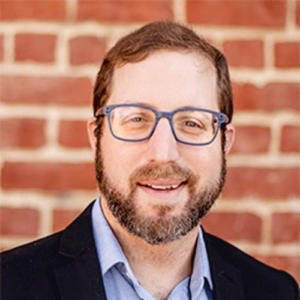On the one hand, the outsize impact of socioeconomic status on student achievement is one of the most consistent findings in education literature.
On the other hand, the philosophy of education reform was built in part on revulsion to “poverty as excuse,” the idea that the presence of poor students allows you to pretend a struggling school system is doing fine.
The reform movement needs a new way to talk about poverty, to slip the knot, if it’s going to fulfill its promise for students and families.
This need was called to mind as I read Michael Petrilli’s recent essay on child poverty in The 74. Citing a new Manhattan Institute report that suggests the child poverty rate dipped considerably in the past 20 years, Petrilli writes that “it raises hard questions about [the] familiar contention that America’s lackluster student achievement is due to poverty — that we must ‘fix poverty first’ before our schools will improve. We haven’t fixed poverty — but we have most certainly decreased it.”
While acknowledging the realities and hardships of economic inequity, Petrilli added, “If the real child poverty rate is anywhere near 7.8 percent, everyone needs to stop pointing to ‘poverty’ as the cause of our educational underachievement.”
I believe this is a misreading of poverty’s relationship to learning.
Although everyone understands on some level that being poor makes life harder, we need to speak with precision — as Petrilli notes — about why poverty gets in the way of learning.
As research increasingly shows, poverty acts like a toxin on the brain. Chronic stress — primarily experienced as an overload of stress-related chemical messengers such as cortisol — disrupts brain development, beginning in the womb.
In the early years of life, high levels of stress, caused by and combined with increased probabilities of trauma and insecure emotional attachments to adults, can seriously interfere with a young child’s foundational neural connections.
This in turn leads to struggles with concentration, memory and behavioral regulation, essential building blocks of growth and learning. Poor sleep exacerbates all of these challenges, as do “scarcity mind-sets,” the ongoing anxiety of not having enough and having little to no margin for error.
Imagine that there are “loud brains” and “quiet brains.” They are equally capable. The difference between them is that cognitive noise created by loss and poverty, as described above, suppresses a child’s natural talents and the potential benefits of teachers and schools.
These compound when concentrated in segregated, low-income neighborhoods and schools, which is where most poor children of color live in many U.S. cities.
I use the word “suppress” in a fairly literal sense: David Kirp writes of a famous study on twins that “virtually all the variation in IQ scores for twins in the sample with wealthy parents can be attributed to genetics.”
But environment had a much larger influence in poorer families: “Contrary to what you might expect, for those children, the IQs of identical twins [who share 100 percent of the same DNA] vary just as much as the IQs of fraternal twins [who share only 50 percent of their DNA]. The impact of growing up impoverished overwhelms these children’s genetic capacities.”
You wouldn’t necessarily expect a moderate drop in child poverty to cause a major increase in academic achievement. For one thing, the composition of poverty changed after welfare reform. The reforms helped the working poor, but by shredding the last-resort safety net, it led to a significant rise in the most extreme poverty, as Johns Hopkins University professor Kathryn Edin demonstrates in her book $2.00 a Day.
Additionally, our educational system is not calibrated to soothe loud brains — an increase in family income may partially pull the thorn out of the paw, but for a student who has experienced trauma, abuse or other adverse childhood experiences, there remains a need for significant ongoing supports that few schools provide.
Reformers have the choice of continuing to skirt these issues or embracing the anti-poverty mantle while keeping a focus on educational excellence. A both-and.
Petrilli and others are correct to say our schools need substantial improvement and that at nearly every income bracket American students tend to modestly lag behind their international peers. As a whole, our teaching force is not of the quality we need. Nor is it plausible, if you’ve read Amanda Ripley’s The Smartest Kids in the World, that merely ending poverty will compensate for the relative lack of rigor in American education.
Quiet brains may be able to access their full learning potential, but they still need to engage with rigorous material taught skillfully in order to thrive.
Still, it strikes me that the absence of anti-poverty measures from the top of every reform agenda fundamentally hamstrings the movement. No matter the methodology, research finds that school contributes less than a third of student achievement. Understanding poverty’s toxic effects on children’s brains makes it very clear why.
Ultimately, we have a choice in how to deal with the reality that student outcomes have long stagnated despite our best efforts and education reform’s policy dominance over the past 15 years.
We can try to continue insisting that schools, in isolation and on their own, can close educational gaps at scale (they can’t), or we can remember that education is ultimately about learning, and learning ultimately happens in the brain.
Then we can undo the Knot.
Get stories like these delivered straight to your inbox. Sign up for The 74 Newsletter


;)
